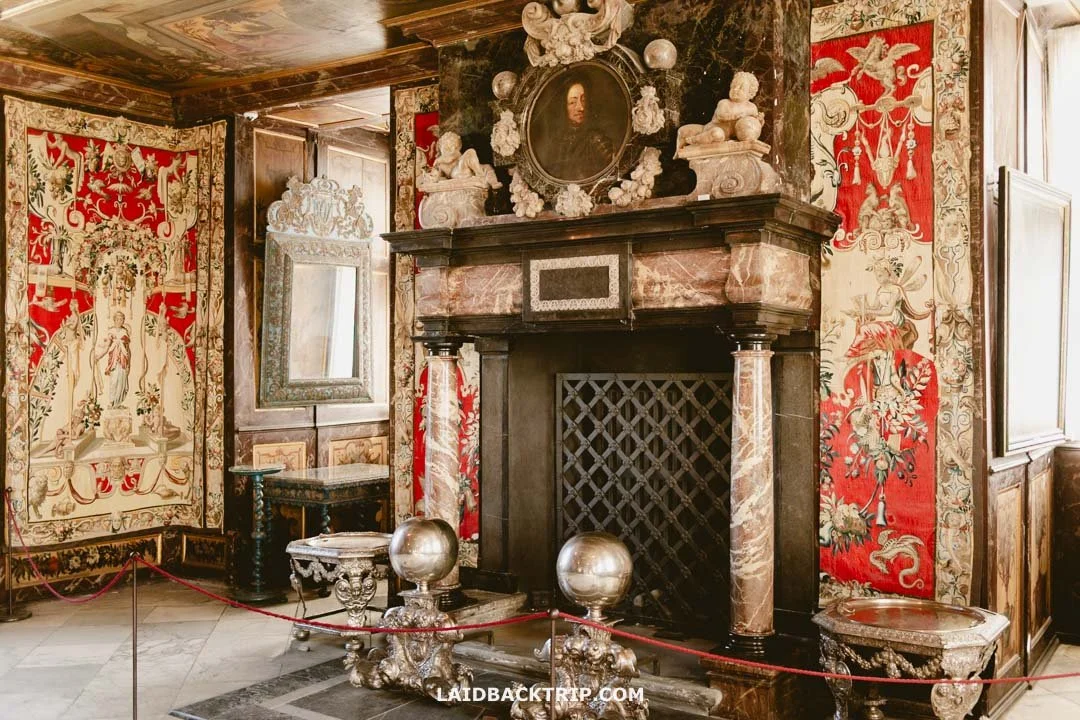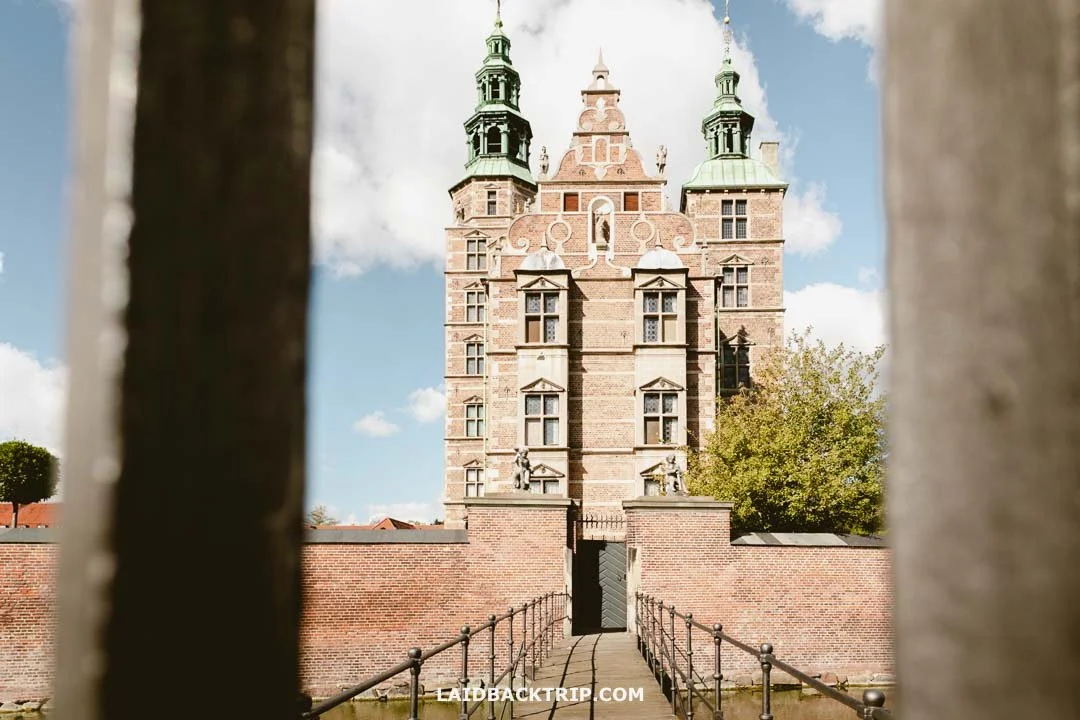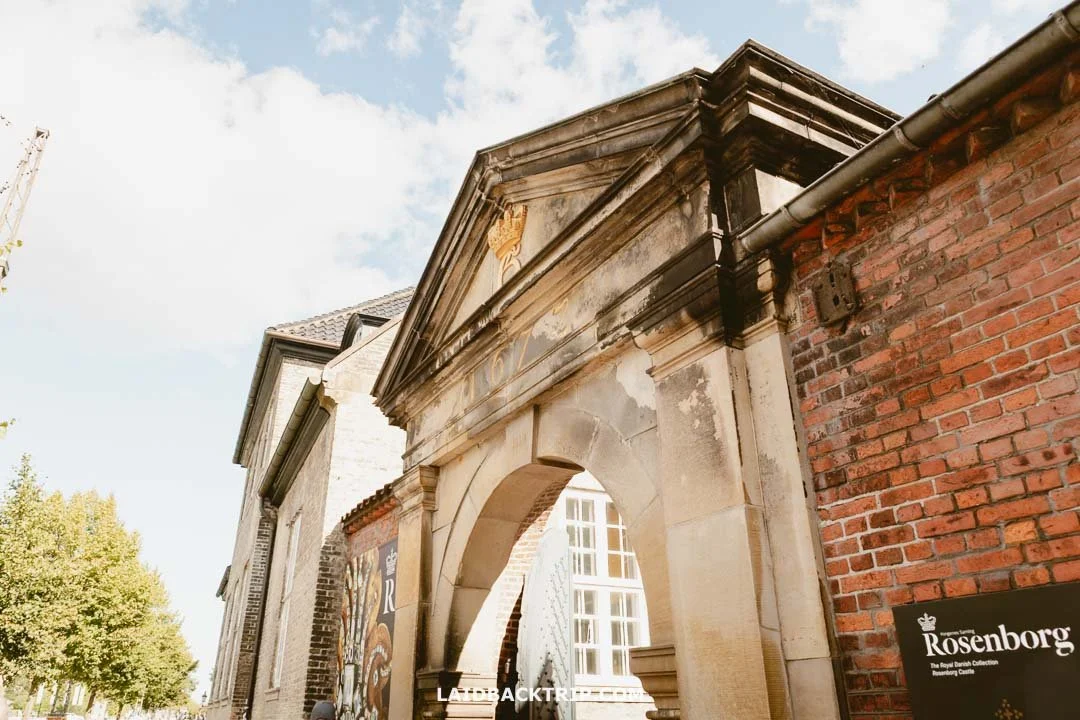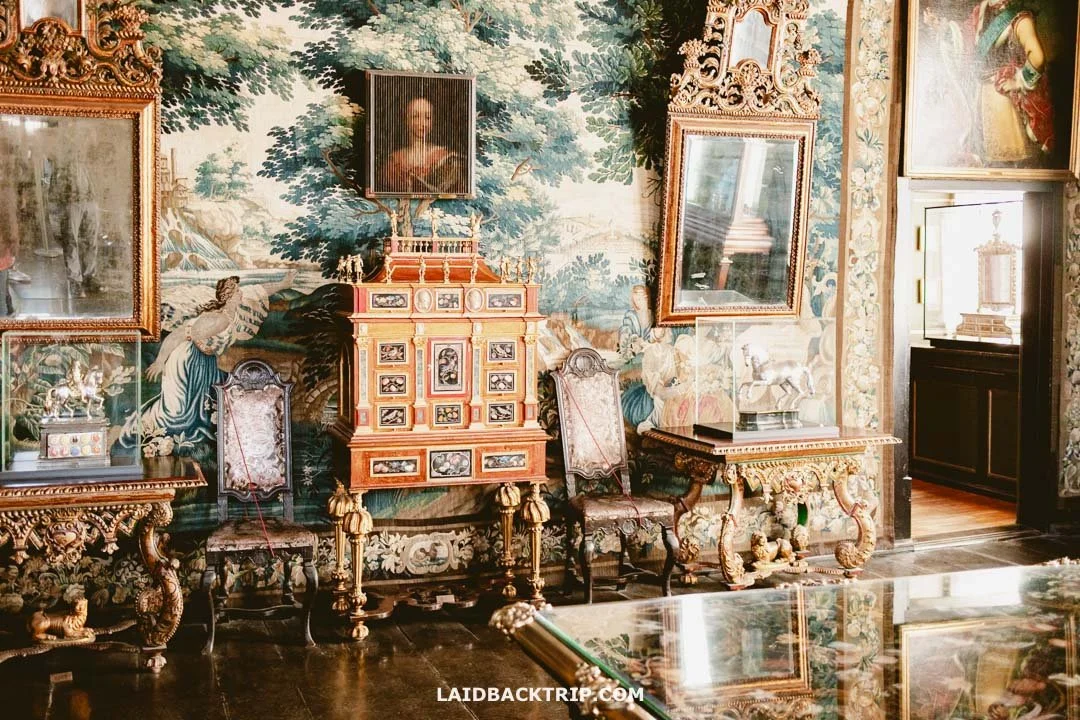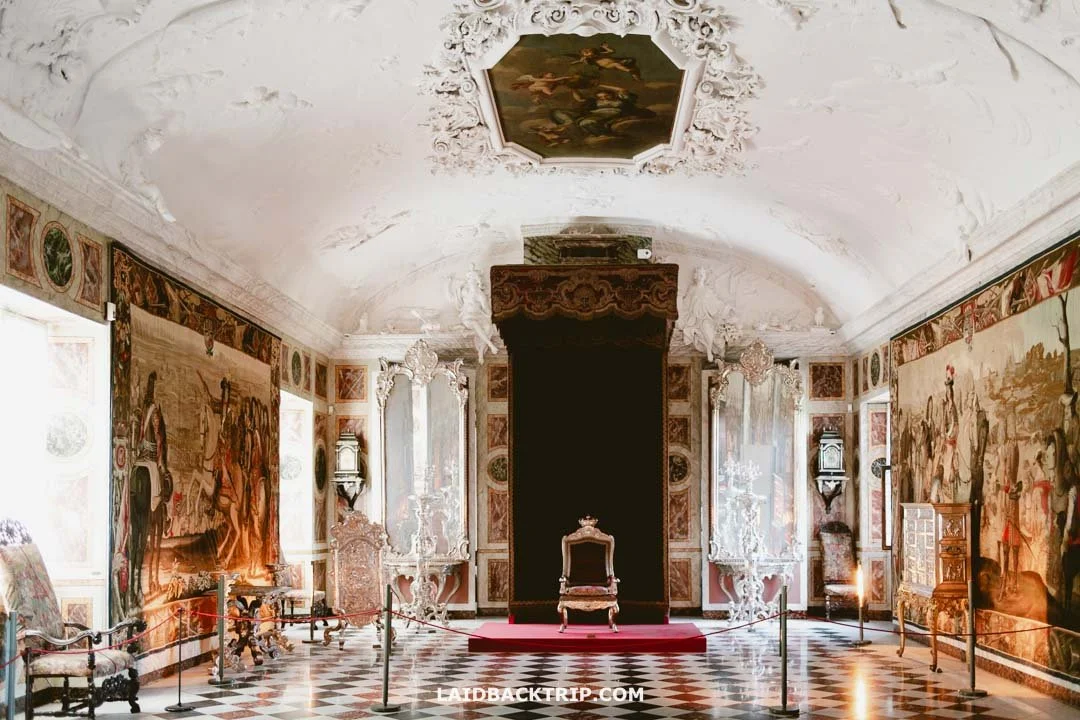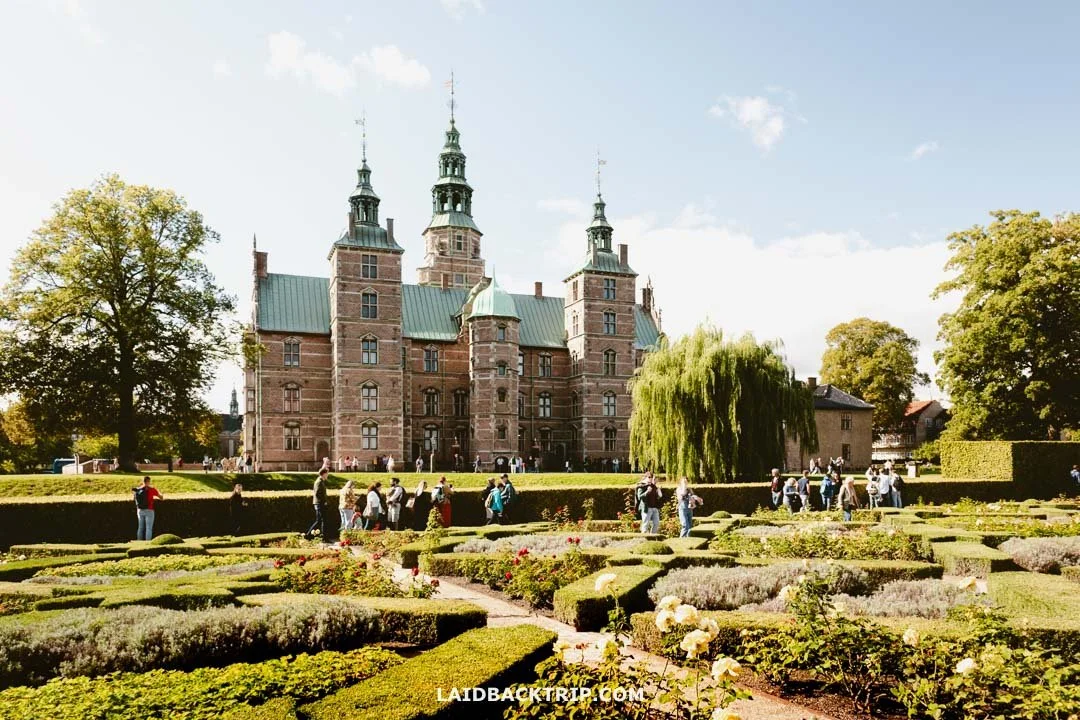Visiting the Rosenborg Castle
Rosenborg is easily one of the most beautiful castles we saw in Denmark.
No trip to Copenhagen is complete without a visit to Rosenborg Castle, once the summer home of the Danish royal family and now a museum.
With just three days in Copenhagen and Rosenborg Castle being one of the city's top attractions, it was only a matter of time before we made our way there. We really couldn't skip it since this Renaissance gem is easily one of the most beautiful historic buildings in the capital. And since it was just a short walk from Nyhavn, which we strolled past more than once, it was a no-brainer.
Built by King Christian IV between 1606 and 1624, Rosenborg Castle served as a summer residence and a private getaway from Copenhagen's busy life. It burned down in 1794, and by 1838, it was opened to the public as a museum showcasing Denmark's royal history. Even though we didn't know it at the time, a few more reasons to visit are that it's surrounded by the beautiful King's Garden (which we kind of expected) and holds the Danish Crown Jewels in the Treasury (that part was a nice surprise).
Lately, we've made a habit of showing up at places without knowing too much, and Rosenborg was no exception, neither from a historical perspective nor a practical one. Basically, we came here totally unprepared, which caused a few minor hiccups, like needing to wait for a time slot. So if you're curious how a typical visit to Rosenborg goes, keep reading.
Rosenborg isn't your typical summer residence.
How to Get to Rosenborg Castle
On Foot/By Bike: Rosenborg Castle is located in the Indre By district, right in central Copenhagen. If you're staying in the city center, there's no need to overthink it, and you can just walk there (or cycle!), since it's only a 15-minute stroll from Nyhavn. I remember that in cities like Munich, the summer residences were usually on the outskirts or completely outside the city, but that's not the case with Copenhagen's Rosenborg.
Rosenborg sits right in Copenhagen city center.
By Public Transport: Since we stayed a bit farther from downtown, we took the metro to Kongens Nytorv first, then walked to Rosenborg Castle from there. While it's a little farther than Nørreport Station, the main advantage of this busy interchange is that several metro lines connect here, making it easy to reach, no matter where you're coming from. For us, it worked perfectly, since we didn't head straight to Rosenborg but made a big detour to Amalienborg Palace, Kastellet, the Little Mermaid, and Nyboder.
If you're heading straight to Rosenborg, Nørreport Station is just a 5-minute walk from the castle. It was a busy morning for us, but since the weather was beautiful, we really enjoyed strolling through this part of Copenhagen. The only issue was that we had no idea when we'd actually get to Rosenborg, so we didn't book anything ahead of time, which we'll talk about more in a minute.
By Car: There's really no need, or even much point, to drive to Rosenborg, but if you do bring your car to Copenhagen like we did, and this castle happens to be your last stop before leaving the city or part of a quick day trip, you can park at nearby Q-Park Nørreport or Q-Park Adelgade, since the castle doesn't have any designated parking. Just keep in mind that these lots usually have strict rules, so double-check the signs before leaving to avoid any fines! You can compare rental car prices in Denmark here.
Tickets to Rosenborg Castle
Admission to Rosenborg Castle is 140 DKK for adults, which isn't exactly cheap, but considering it's one of Copenhagen's top attractions and we paid about the same at other Danish castles, it's actually a fair deal. We booked regular tickets, which let us explore Rosenborg on our own. They also offer an English guided tour, but it was already booked out for the day.
The view of Rosenborg Castle from the Botanical Garden was worth the wait.
It was around noon on a busy weekend when we reached Rosenborg, and without a prebooked ticket, getting in wasn't an option, at least not immediately. According to their booking system, the next available time slot was in about 45 minutes. So we booked the tickets and headed across the street to wander through the Botanical Garden while we waited. We also considered hanging out in Rosenborg's Gardens (which are free to enter), but decided to leave that for after the castle visit.
Whether you should book a ticket to Rosenborg depends on the time of year you visit, but the general rule is that it's a good idea, especially during the busy summer season. We managed to get in with just a short wait, which was more of a minor inconvenience than anything else. And honestly, it was nothing compared to some of the attractions we visited in Paris, where many were fully booked days in advance.
We explored Rosenborg on our own since the guided tour was fully booked.
By the way, Rosenborg Castle is included in the Copenhagen Card, which can save you money on admissions, especially if you're planning to stay longer and visit lots of attractions. One thing to note is that you can't prebook your time slot online for Rosenborg, which might be a minor inconvenience.
Touring the Rosenborg Castle
Although we said we'd save the gardens for later, we actually walked through the western part on our way to the castle since we entered the complex through the gate at the corner of Sølvgade and Øster Voldgade. We made it all the way to the stone bridge that crosses the moat, which was part of Rosenborg's defenses back in the early 1600s.
The bridge over Rosenborg's moat was closed when we visited.
From here, we could easily enjoy one of the most beautiful views of Rosenborg Castle, though only through a locked metal gate. Our first impression was that Rosenborg was truly stunning. It was the first Renaissance castle we visited on Zealand (with Kronborg and Frederiksborg saved for later), and we just couldn't get enough of the views.
Like Egeskov, which was one of our favorite spots on Funen, the castle was smaller than we expected (partly why they limit daily ticket sales). Still, it featured the typical red brick façade with intricate sandstone details, copper-roofed towers, decorative gables, an oriel tower, arched windows, lion statues, and a moat crossed by a stone bridge. The moat was especially interesting since it didn't surround the entire castle, so it was more for looks than defense.
As we stood there, we noticed the bridge was closed, and a small sign said visitors should use the main entrance on Øster Voldgade. I guess it was mostly for safety since the bridge was small and there were so many people around. That's also when we realized the ticket situation we talked about earlier. So, we decided to walk to the Botanical Garden first, then come back afterward.
This time, we entered through the gate on busy Øster Voldgade, and from this side, Rosenborg was almost hidden. In fact, the first gate was so unassuming that if we hadn't known what was behind it, we probably would have just walked right by without stopping.
Instead, we had to use the main gate to get into Rosenborg Castle.
Another thing we found out after passing the second gate and joining the line was that daypacks aren't really allowed inside. So I just went back to the cloakroom and left mine in the lockers, which were free to use. Since we had online tickets, we didn't need to stop at the ticket desk to exchange them, like you do with the Copenhagen Card, but that was just a small plus.
The ticket office and cloakroom are right here at Rosenborg's entrance.
After that, we were ready to enter the castle. As we mentioned earlier, Rosenborg was built as a retreat, so the whole experience felt different from places like Kronborg, which we visited later on the trip. While Rosenborg did have some defensive features, they were nowhere near as prominent as the fortress in Helsingør.
The biggest difference was inside the castle itself. Right from the start, we noticed Rosenborg's rooms (about 24 open to the public) were more lavish, with beautiful furnishings, paintings, tapestries, decorations, and intricate details.
Later on, this room was turned into an antechamber for Frederik IV's sister, Princess Sophie Hedevig.
I'd say Rosenborg offered a pretty typical castle experience, just what you'd expect from a place like this. It definitely didn't have the opulence of Versailles or the eccentric charm of Linderhof, but it had its own unique style, something we hadn't seen yet on our Denmark trip. Plus, the royal history really came alive in every room.
When we were walking through our fourth or fifth room, Lucie pointed out that the rooms actually looked a bit more luxurious than she expected from a summer palace, and I just agreed. Rosenborg definitely had a side that wanted to impress, whether it was foreign ambassadors and royal guests back then or tourists like us today.
Another thing we noticed was that the rooms weren't as bright as we expected a summer residence to be. Instead, they were a bit dimmer, which added a touch of dignity and elegance. Maybe it was the curtains combined with a partly cloudy day, but we kind of missed that light, summery feel here.
The Knight’s Hall is the most impressive room inside Rosenborg Castle.
On the other hand, some rooms were truly stunning, whether it was the Knight's Hall with its coronation thrones and silver lions, Christian IV's private chambers, including his bedroom and writing room, or the Marble Chamber, which showed off the grandeur of absolute monarchy. The Porcelain Cabinet with Flora Danica was closed, since this unique porcelain set is kept at Koldinghus, which we had visited earlier on our Jutland trip.
Of the other notable rooms we saw at Rosenborg, the Regalia Room was probably the most fascinating since it once held the Crown's jewels, regalia, and gold. The Dark Room, Rose Room, and Garden Room were pretty cool as well, along with some other rooms and corridors we didn't get to mention.
The Rose Room was transformed from a dining hall into a beautifully decorated antechamber.
Travel Insurance
We never leave home without travel insurance that was designed to cover our expenses if something goes wrong during the trip. Travel insurance protects against theft, flight delays, injury, illness, cancellations, and much more. Travel smarter and safer!
World Nomads provides travel insurance for travelers to cover their trip essentials, including sports and adventure activities.
SafetyWing is affordable travel insurance for backpackers, long-term travelers, and digital nomads.
What to See in the Royal Treasury Museum
Finally, we went outside and located the gate at the Stair Turret, taking the stairs down to the basement where the Treasury is kept. Before checking out the Crown Jewels, we explored Rosenborg's wine collection, which includes bottles as old as the 16th century, and the weapons collection. After that, we visited the Ivory and Amber section, which was absolutely incredible.
One of the most breathtaking items in the museum was this finely carved ivory ship model.
Back then, Danish kings commonly employed expert carvers who transformed ivory tusks into amazing pieces of art. Many were really talented, and the results are truly stunning. But seeing all that ivory really got us thinking about the darker parts of Denmark's history tied to those glamorous pieces, which we didn't know much about. Since the exhibit stuck to the artistic and historical angle, we figured we'd hold off on diving into it until we got back to the hotel.
The final section of this underground museum had three rooms, each displaying the Danish Crown Jewels and royal regalia, first officially designated by Queen Sophie Magdalene in 1746. This was definitely one of the highlights of our Rosenborg visit, especially since it wasn't crowded like these places often are. Some of the most interesting items include Christian III's sword, the Oldenborg Horn, Frederik III's private copy of Lex Regia, and Christian V's crown.
Denmark's absolutist kings were crowned using this Christian V's crown.
Walking Around the King's Garden (Kongens Have)
After finishing the castle tour, we picked up our daypack and headed back to the King's Garden. Denmark's oldest royal garden was designed in the early 1600s and features Baroque and English-style landscaping, and it's a big part of every visit to Rosenborg.
King's Garden is basically a very nice city park.
On a warm sunny day like the one when we visited, the castle garden was full of people. We wandered around the castle for a while to take some photos, then found a nice bench in the Rose Garden where we could sit and finally enjoy our lunch of chocolate muesli and bananas (what else, right?).
By late September, most of the roses were gone, and the garden wasn't as colorful as it likely was in June or July. Even so, it was a lovely spot, especially since Rosenborg was right there in front of us.
Pretty great view for a lunch spot, don't you think?
One of the best things about Rosenborg's Garden is that it's free to enter, unlike, say, Egeskov Gardens, which we visited earlier on this trip. Along with the great weather, that's probably why so many people were there. The King's Garden is open from 7 AM to 10 PM.
Is the Rosenborg Castle Worth Visiting?
Our answer is definitely yes, Rosenborg Castle is one of Copenhagen's must-sees. It has beautiful architecture, rooms, and gardens, and it's worth a visit even if you just want to admire it from the outside as a quick detour from Nyhavn. That said, we also think it's worth going inside since there's a lot to explore, from the beautifully decorated rooms and rich Danish royal history to the Crown Jewels.
When you're in Copenhagen, there's honestly no reason to miss Rosenborg Castle.
Accommodation Near Rosenborg Castle
Some of the best hotels near Rosenborg Castle are 25hours Hotel Indre By and Scandic Norreport. Both are just a 5-10 minute walk from the castle and offer modern rooms with plenty of comfort. For those on a budget, Wakeup Copenhagen - Borgergade is a great option if you want to save on accommodation.
That said, Copenhagen has a great metro network, so the location of your hotel isn't too important if it's near one of the many stations. For example, we stayed at AC Hotel Bella Sky, about a 10-minute metro ride away, and if we had gotten off at Nørreport instead of Kongens Nytorv, it would have been just a five-minute walk.
Travel Resources
Here you can find links to all the travel resources we use and which you might find helpful when planning your next holiday.
Accommodation: When looking for accommodation, we usually search hotels via Booking.com or Hostelworld.
Tours: Although we love to travel independently, some places are better to visit with a guided tour.
We prefer GetYourGuide for its easy-to-use interface and solid reputation. Another great alternative is Viator.
Rental Cars: When going on a road trip, we always use Rentalcars.com, a reliable site for booking a rental car in advance.
Flight Tickets: When looking for flight tickets, you can search Skyscanner to find the best price.
Travel Insurance: World Nomads and SafetyWing cover against risks of travel.

